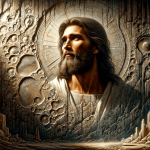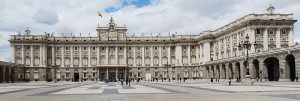
(Wikimedia CC; please click to enlarge the image)
I spoke too soon about leaving my Moorish/Arabic focus behind. Not quite. We spent several hours at the Palacio Real de Madrid (the Royal Palace of Madrid) today. And, as it happens, the Palacio Real stands on the site of a ninth-century alcázar (al-qasr, “palace”) that was constructed near the town of “Majrit” by Muhammad I of Córdoba as an outpost and that was inherited after 1036 by the independent Moorish “Taifa” of Toledo. Madrid only fell to Alfonso VI of Castile — and, thus, into Christian hands — in 1083.
It’s a huge and impressive structure — some would find the enormous armory uniquely fascinating — but I kept thinking of the transience of those represented in it. Charles V, Philip II, and on and on . . . all gone. Worldly wealth and glory are very transient.
Most of the rest of the day was spent at the Museo del Prado, Spain’s principal national art museum. Even after several hours, though, we had given it only the most frustratingly cursory look.
We took in special exhibits of works by Luis de Morales (1586) and Jean-Auguste-Dominique Ingres (d. 1867).
Wonderful, wonderful paintings. Too many to itemize.
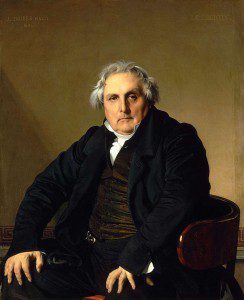
And, of course, there were striking works in the general, permanent, collection by Goya, including his very famous paintings from the Spanish War of Independence against the French.
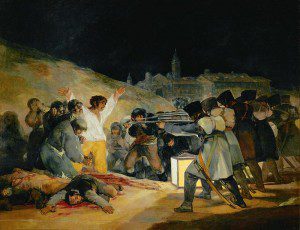
(Wikimedia CC, public domain; click to enlarge)
From among the many other paintings that struck me, I’ll share two more:
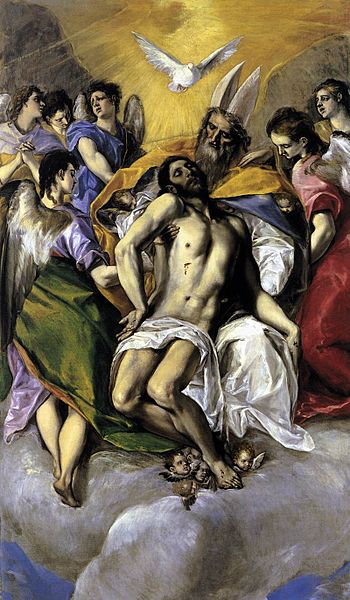
I mentioned, in a blog entry that I posted yesterday (I believe), how many paintings I’ve seen here in which the Father is depicted corporeally, anthropomorphically, as an older man. Above is another such instance, by El Greco. The Holy Spirit, represented by a dove, hovers above the recently crucified Son, who is cradled in the arms of his sorrowful Father. And there is yet another such painting, bearing the same title but by a lesser-known artist, in a directly adjacent room of the Prado.
And then there’s this distinctly weird offering, which seems an obvious influence on the twentieth-century Spanish surrealist Salvador Dalí:
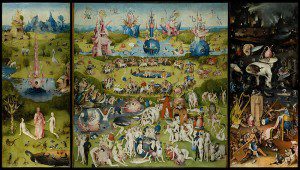
(Hieronymus Bosch, d. 1516)
Wikimedia CC, public domain; click to enlarge.
Afterwards, we caught the Metro to Madrid’s “Temple Square,” where two large Church-owned buildings (including temple-worker housing, an Institute of Religion, a Missionary Training Center, a meeting house, and so forth) share the grounds of the Madrid Spain Temple:
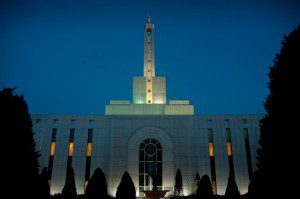
(LDS.org; click to enlarge)
Among others, we met a pair of missionaries there — one who’s been out for about eighteen months, from Wisconsin, and the other, from Maryland, who’s been out for two months. Our friends had already met a large group of missionaries in the Prado, but my wife and I were in a different portion of the museum at that moment, so we missed them.
Posted from Madrid, Spain








